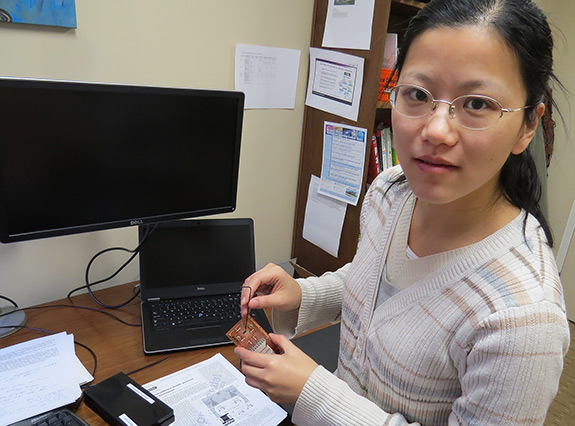According to a team of scientists from Princeton University, it is now quite possible to carry out experiments in quantum computing using a redesigned laser technology known as maser. Maser is made to be the size of a rice grain, but actually stands for Microwave Amplification by Stimulated Emission of Radiation – which means it is an amplifier that works on the same principle as a laser and also emits coherent microwave radiation.
The maser made by the Princeton University team of scientists is composed of quantum dots, that is, tiny bits of semi-conductor material that acts like single atoms but capable of emitting lights at longer wavelengths than normal, conventional lasers.
As a matter of power efficiency and cost-effectiveness, this maser uses only about one-billionth of the electric voltage needed to power up a hair dryer. And according to the leader of the study, Jason Petta of Princeton University, “It is basically as small as you can go with these single-electron devices.”
Electronics companies are not sitting by while research bodies have all the fun; Apple, Samsung and other electronic firms have started experimenting with maser to enhance LCD displays on TV sets, tablets, and smartphones among others.
And the reason for this is not far-fetched: Maser consists of four quantum dots, in two pairs, placed inside and toward the end of a narrow cavity made of a superconducting material, niobium, which requires a temperature near absolute zero (around minus 459 degrees Fahrenheit); and transferring just one electron at a time, each double quantum dot emits a photon in step with each other – a maser.
“The goal was to get the double quantum dots to communicate with each other,” said Yinyu Liu, a fellow researcher on the project.
While masers can competently be used to fine-tune lights which are produced at other frequencies, this cannot be said of lasers. In ordinary lasers, the frequency of the emitted light is fixed due to the materials used to create the laser beam, but maser uses the energy levels inside the dots to produce light at other frequencies.
Very soon, the researchers expect that the interaction between light and moving electrons will make it suitable for quantum computing experiments.

